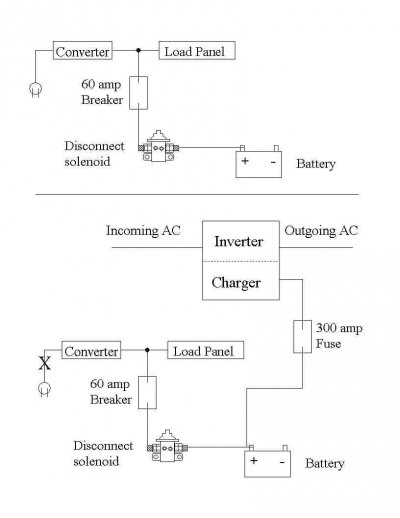Ned said:No, the 12V circuits are always powered from the battery. If you have a charger, then you can disconnect the converter, it's not needed and, as you say, can only confuse the charger.
Yes, I could disconnect the converter and the battery will power the house 12v circuits. But imagine this. My external battery charger is happily charging the battery and has just about topped it upto 100% and I then switch on the lights and the ceiling fan and the inverter to watch tv. The battery charger will then not know what the hell is going on because IT thought it had just finished charging it's battery when suddenly, all these amps were called for.
So that the battery charger can do it's job properly, the battery needs to be disconnected from the house circuits hence the need for the converter to be on and working when on shore power.
Or am I missing something
Bryan

